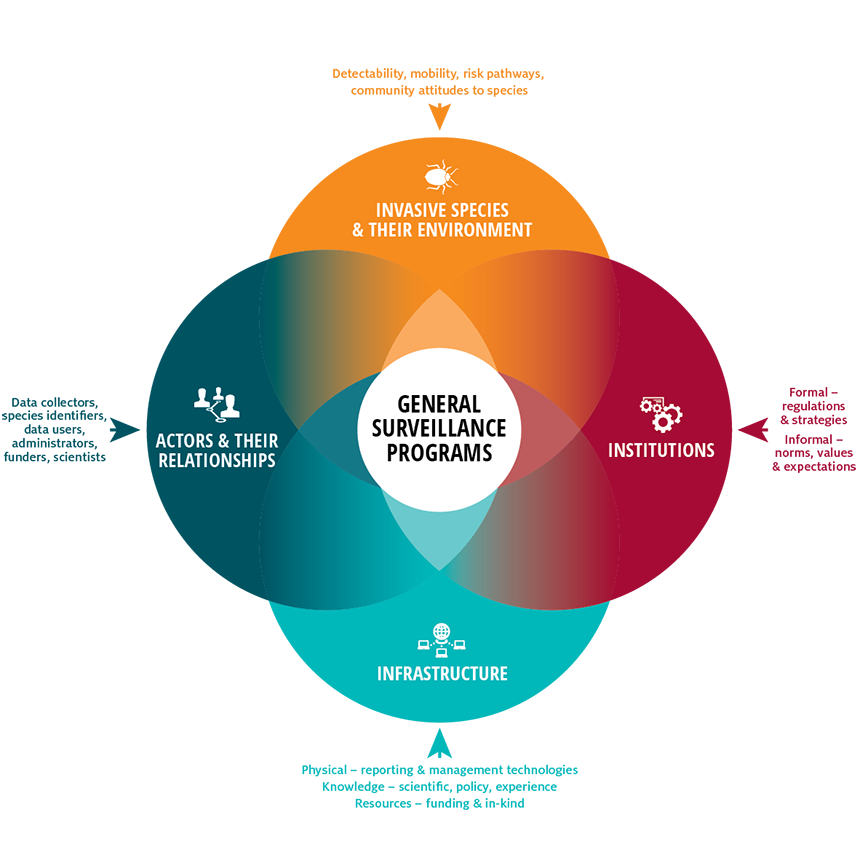Authors: Heleen Kruger, Marwan El Hassan, Nyree Stenekes, Robert Kancans
Summary
There is an increasing expectation that all Australians will play a greater role in supporting Australia’s biosecurity system. A key area for citizen contribution involves general surveillance, that is, harnessing opportunities to involve people from all walks of life to contribute to gathering and reporting information about the presence of pests, weeds and diseases in order to support government endeavours dealing with biosecurity issues.
General surveillance activities are increasing across plant, animal, weeds, environment and the marine sectors. Much is already known about general surveillance, but information tends to be fragmented. Current research about general surveillance tends to focus on specific aspects of initiatives, such as engaging volunteers; identification and diagnostic technologies; or data analytics approaches.
However, general surveillance initiatives are greater than the sum of their parts due to the interactions that occur between the different aspects and interactions with the broader context. Fragmentation also results from the limited sharing of lessons learned between sectors. This review presents an approach to addressing the fragmentation by exploring general surveillance through a holistic systems-thinking lens, integrating lessons learned across different sectors, contexts and aspects of general surveillance initiatives.
This review offers insights about the different components of general surveillance initiatives comprising:
- actors and their relationships
- infrastructure (physical, knowledge and financial systems)
- institutions (formal and informal rules)
- the biophysical components.
It illustrates how the interactions within components, among them and with the broader context are important considerations for planning and running general surveillance initiatives. Changes or weaknesses within one component are likely to have implications elsewhere in a general surveillance initiative. These implications could be easily overlooked and they may be sources of significant transaction costs in terms of time, effort and expenditure. These costs could render such initiatives unsustainable or not cost-effective.
For example, poorly designed community engagement and support strategies may result in poor data quality, excessive false positives, or difficulty gaining and/or maintaining volunteer support. Poor data quality is likely to result in data users losing trust in the initiative. Surveillance activities on certain types of land might need special conditions in place for volunteers, such as when private land or sensitive ecosystems are involved. Special equipment used may need to comply with broader rules such as the conditions for the use of drones being set by aviation regulations.
Many of these challenges are identified in this document and can be prevented or minimised if identified and addressed early on. This requires systems thinking and early and multi-directional open communication and information flow between the different actors or potential actors in any general surveillance initiative.
Download the report
Understanding general surveillance for biosecurity as a system - Report (PDF 1.05 MB)
Understanding general surveillance for biosecurity as a system - Report (DOCX 2.37 MB)

